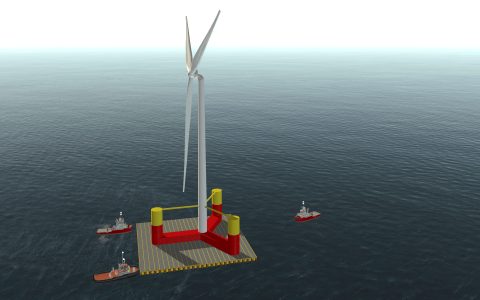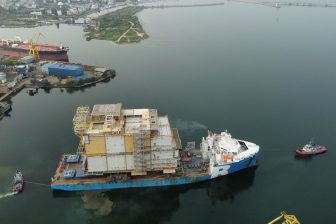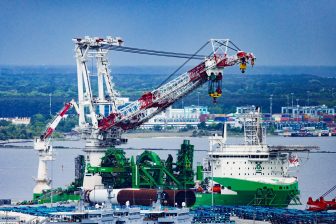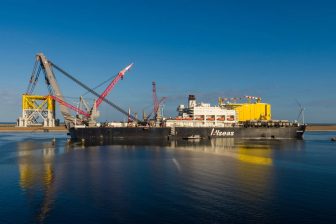
Pembroke Port prepares for Floating Offshore Wind
The Port of Milford Haven Authority is collaborating with Offshore Renewable Energy (ORE) Catapult, and Tugdock Limited, to prepare for floating offshore wind construction at its Pembroke Port facilities, in Wales.
The collaborative project will simulate the processes of floating offshore wind turbine assembly, and that of manoeuvring large floating wind turbines in and out of the port. These simulations will give a detailed understanding of procedures and help guide future Port planning. Further simulations will be conducted to assess Tugdock’s floating dry dock technology’s potential in terms of increasing the port’s capacity.
Based in Falmouth, Cornwall, Tugdock Limited has patented and produced a new floating solution to lift vessels and floating structures from the water. It enables heavy structures to be built or assembled and loaded- out in ports with water depth or space restrictions. The submersible platform is modular, road transportable, easy to erect, and reusable. The product line has a range of deck sizes ranging from 12 square metres to 120 square metres, with a total capacity of 35,000 metric tonnes.
Celtic Offshore Wind
Due to Pembroke Port’s proximity to the Celtic Sea, an increasing number of offshore renewable energy developers are seeking to base themselves locally. As such, the Pembroke Port infrastructure is being adapted, with a £60 million project part-funded by the Swansea Bay City Deal. The Port is also being supported by the Marine Energy Engineering Centre of Excellence (MEECE), ORE’s Catapult hub, the UK’s leading innovation centre for offshore renewable energy, established in 2013 by the UK Government.
Simon Cheeseman of ORE Catapult stated: “The Celtic Sea has some of the best wind resources in Europe, so the fast-growing floating offshore wind industry is a huge opportunity for the region. (…) In 2023, the Crown Estate, the controlling authority for the seabed, is issuing leasing rounds for up to 4 GW of electrical energy from floating offshore wind to be deployed by 2035 with a follow-on 20 GW anticipated by 2045.”
Lucas Lowe-Houghton, Director of Business Development for Tugdock, added “Tugdock’s technology has been designed to help ports play a bigger role in floating offshore wind turbine assembly. It allows floating dry docks to be delivered by road in modular form and assembled at the port to dimensions far wider than most of the world’s existing dry docks. This technology can greatly increase the capacity of docks such as Pembroke Port. The floating platform is then towed to deeper water for the launching of the turbines.”
You just read one of our premium articles free of charge
Register now to keep reading premium articles.




